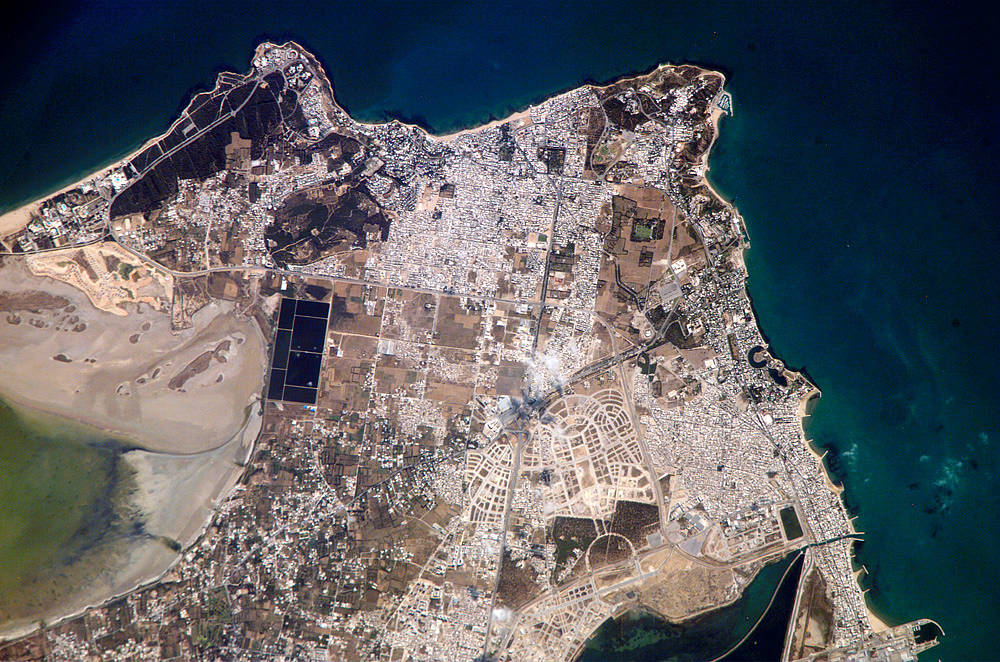
The ancient site of Carthage in North Africa is seen in this photo taken by the International Space Station’s Expedition 13 crew. The city-state was founded by Phoenician settlers in 814 B.C., and it subsequently became the seat of a trade empire that controlled much of the western Mediterranean region. Carthage was completely destroyed by the Roman Republic during the Third (and final) Punic War (149-146 B.C.). The end of Carthage has been made notorious by the story that the Romans allegedly sowed the city with salt to ensure that no further rivals to their power would arise there. However, given the great value of salt at the time and the strategic importance of the city’s location, scholars dispute whether the event actually occurred. Following the destruction of Carthage, Roman dominance of the Mediterranean continued until the fall of the Western Empire in 476 A.D.
Modern Carthage is a wealthy suburb of the Tunis metropolitan area (the center of which is located to the southwest of the image). Dense concentrations of white rooftops are obvious in the residential subdivisions to the north and south of the ancient city location. Large tracts of new developments appear to be in progress along the curving, light-colored roadways to the west of the historical city (lower image center). The green, shallow waters of an evaporating salty lake are visible at image left. Several such lakes are present in Tunisia and are centers for bird-watching tourism.Image credit: NASA

























